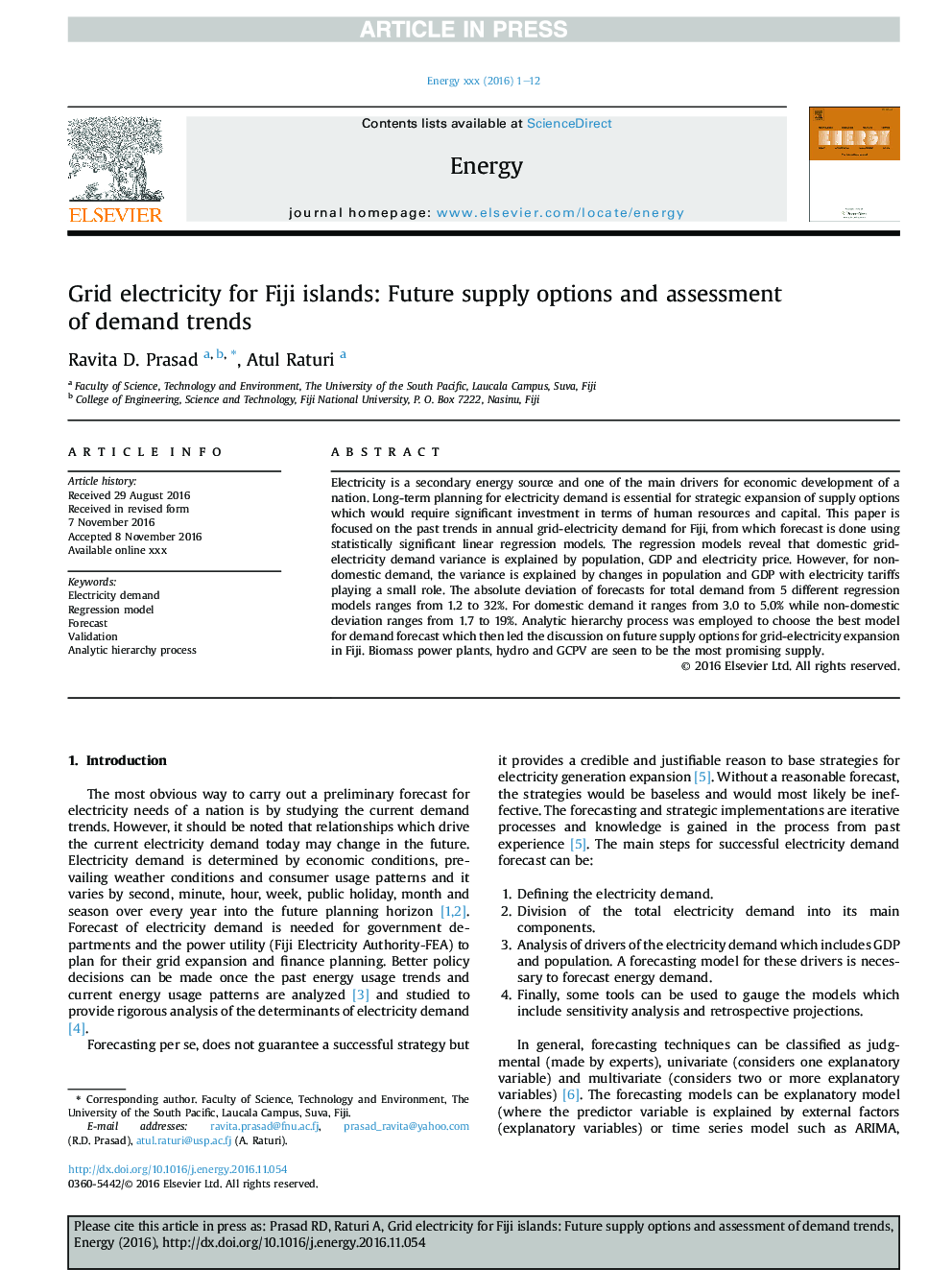| Article ID | Journal | Published Year | Pages | File Type |
|---|---|---|---|---|
| 5476928 | Energy | 2017 | 12 Pages |
Abstract
Electricity is a secondary energy source and one of the main drivers for economic development of a nation. Long-term planning for electricity demand is essential for strategic expansion of supply options which would require significant investment in terms of human resources and capital. This paper is focused on the past trends in annual grid-electricity demand for Fiji, from which forecast is done using statistically significant linear regression models. The regression models reveal that domestic grid-electricity demand variance is explained by population, GDP and electricity price. However, for non-domestic demand, the variance is explained by changes in population and GDP with electricity tariffs playing a small role. The absolute deviation of forecasts for total demand from 5 different regression models ranges from 1.2 to 32%. For domestic demand it ranges from 3.0 to 5.0% while non-domestic deviation ranges from 1.7 to 19%. Analytic hierarchy process was employed to choose the best model for demand forecast which then led the discussion on future supply options for grid-electricity expansion in Fiji. Biomass power plants, hydro and GCPV are seen to be the most promising supply.
Related Topics
Physical Sciences and Engineering
Energy
Energy (General)
Authors
Ravita D. Prasad, Atul Raturi,
